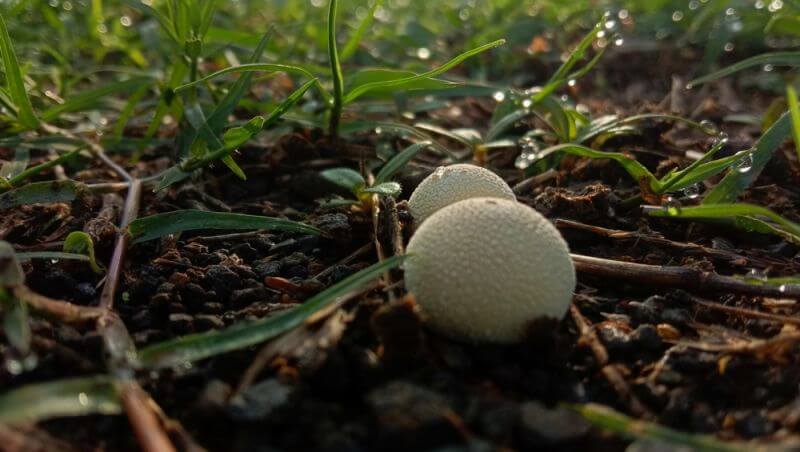The Universal Edibility Test, Rules of Thumb & Signs of Spoilage
In survival ordeals that last weeks or months, food procurement usually trumps all other needs, and survival often hinges on the ability to determine what can and can’t be eaten safely. The trouble with learning about wild edibles and food procurement is that food sources are so diverse that even most people who teach survival for a living are only proficient at finding food in one or two regions.
If you take a survival instructor from the Amazon and drop him off in the desert southwest, or take an indigenous hunter gather from the Rocky Mountains and drop him off in the Arctic, neither will likely recognize most of the plants, fish and animals, what can be eaten in which season or know how to process food to make it edible.
Knowing which plants and animals to eat in each season and how to prepare them is ideal, but when survivors lack training or find themselves in an unfamiliar region, they must resort to edibility tests and rules of thumb.
Edibility
Edibility tests and rules of thumb do not hold up to rigorous scientific analysis 100% of the time, but they that does not change the fact that they are right most of the time and are easy to remember. Our ancestors surely used their senses, edibility tests, and rules of thumb to test foods long before the scientific method was developed, and enough of them managed to survive to populate every continent save one.
That said, someone who grows up with poor sanitation is going to have a much more robust immune system that someone who’s mom boiled their pacifier every time it touched the floor when they were a baby and slathered every surface that they came in contact with with antibacterial cleaning products. Survivors of the latter category will be far more sensitive to pathogens than those of the former.
Fundamentalism vs Adaptability
Often times, using rules of thumb and the universal edibility test results in a better outcome for the survivor than rigidly abiding by the advice of survival manuals. Despite the importance of survival, the rigorous academic study of survival has not progressed as far as one might think. In studying thousands of books on the subject as well as thousands of survival ordeals, I have learned that even the very best experts are sometimes wrong.
In these studies, one of the survivors I interviewed was José Salvador Alvarenga, a long-line fisherman out of Costa Azul, Mexico whose boat was disabled off the West coast of Mexico by a norteño (a type of severe storm in that region) and survived an incredible 438 days adrift in the Pacific Ocean. In Salvador’s case, military manuals (and consequently most survival manuals, many of which are mostly comprised of regurgitated content originally published in military manuals, to the point that readers will recognize the same drawings recycled endlessly) tell readers not to eat triggerfish … ever. Had Salvador read any of these books and followed their advice, I’m convinced he would have died just like countless others who have died adrift at sea. Fortunately, Salvador tried the triggerfish, which are, in fact, edible, provided they are taken in the open ocean, where the fish are not feeding on coral reefs where they may consume microorganisms that contain ciguatoxins and can turn their flesh poisonous to humans.
That triggerfish taken in open ocean are edible is very important for survivors adrift at sea to know because a vessel, or raft, adrift at sea provides cover, shade, and eventually food, as organisms being growing on it. In fact, in waters warm enough for people to survive long enough for starvation to be an issue, the first species of fish to come around that is large enough to catch for food is usually triggerfish. Survivors know they are there because they make noise as they nibble and peck at barnacles and other marine growth that forms on the boat (or raft) with beaklike mouths.
Stephen Callahan, author of Adrift: 76 Days Lost at Sea, was another survivor who ate triggerfish, which certainly contributed to his survival if eating them did not save his life outright. (Callahan, 1986) Callahan built boats, sailed and fished, and had surely eaten triggerfish before. It is common fare in restaurants. Studying such stories, one will quickly understand how important triggerfish are to maritime survival. They are arguably THE fish survivors need to know are edible as long as they are not feeding on coral reefs, which, for survivors adrift at sea, is somewhat unlikely because reefs occur is shallow water, usually near atolls or land, something survivors adrift at sea tend to notice!
When the experts are so often wrong, even about big, important facts, and heeding their advice will likely get you killed, how do you know what to eat? That’s where rules of thumb come in handy.
Universal Edibility Test
Edibility testing is all about taking it slow and incrementally increasing your exposure to questionable food sources to avoid acute poisoning. The same principles apply to animals as well as plants.
In using them correctly, the survivor must keep in mind that rules of thumb are inexact and that there will be exceptions to them. The process is accomplished by screening food, washing it, cooking it to prevent infection and then slowly increasing your exposure to incrementally larger amounts of a food source over a time period that is greater than the onset of symptoms of allergy, poisoning or food poisoning.
Thus, the universal edibility test takes time, so it works best when there is an abundance of a given plant to test. Otherwise, it may not be worth your time.
- Inspect – Where possible positively identify foods using a field guide. The better ones have photos of the various parts of plants at various stages of development. Eat only healthy plants free of insect damage and slime. Old plants wither and decay just like animals.
- Separate – The roots, stalks, leaves, flowers, and nuts, fruit or seeds must be tested separately because one part may be edible, and another may not, and vice versa.
- Smell – Crush a small portion and smell it. If it smells objectionable, strongly acidic or like peaches or burnt almonds, don’t risk it!
- Touch – Next, test for skin irritation. Squeeze a little juice of the plant onto tender skin on the inside of the forearm and hold the plant in contact with your skin for 15 minutes. Wait eight hours. If there is any adverse reaction such as a rash, itching, burning, numbness, redness or welts, move on to the next plant or plant part. If adverse reaction is absent, move on to the next test.
- Taste: Lips, Mouth, Tongue – Prepare the plant as you would to eat it. Washing and cooking it is preferred since some plants aren’t edible until they are cooked. Then touch some of the plant to your lips for three minutes and observe for redness, numbness, burning or irritation. If the test on the lips goes OK, move the material to the corner of your mouth for 15 minutes. If that goes OK, move it to your tongue for 15 minutes.
- Eat: Chew, Swallow, Eat – If the last step went ok, chew the material and wait 15 minutes. If it stings, burns or irritates your mouth or tastes soapy, spit it out. If the chew test went OK, swallow a small amount of the food and wait 5 hours without drinking or eating anything else. If the swallow test went OK, then eat a small portion. If there are no adverse reactions, vomiting, diarrhea, belching, cramps or other signs of abdominal distress after 8 hours, the food may be considered safe.
If you experience abdominal distress, vomit or have diarrhea, drink warm water and treat the symptoms. If you do not have medicine, mix white ash from non-poisonous wood with water to absorb toxins and calm the stomach.
Cooking Spoiled Foods
Cooking, or pasteurizing, food will kill pathogens but the toxic waste products they produce will remain. Wash and then cook fresh foods to destroy any pathogens present. Do not eat thoroughly spoiled foods even if you’ve cooked first because too much waste may have built up in them.
Wet Packed and Canned Foods
If they are bulging or leaky, throw them out. Dents in cans are OK as long as the can remains airtight. Canned food stored at a constant cool temperature can be edible many years after the “best by” date.
Open it, inspect it and smell it. As food ages color, taste and nutrition all degrade but it may still be edible. A release of air when the can is opened, drying, foul smell, signs of mold, fungus or bacterial growth are signs of spoilage. Do not eat.
Fish
Where fish are available, fishing often provides more calories of food per calorie expended in food procurement, than trapping or hunting, and survivors who have never fished before have successfully caught fish during survival ordeals. All freshwater fish are edible, but salmon and other fatty fish provide more calories and more fat calories. A human being needs to eat a lot of lean fish per day to survive (2 dozen pan-sized fish on average) solely on fish and can soon overfish a spot if he stays in one place.
Erysipeloid fish poisoning is a skin disease common in fisherman whose skin is punctured by sharp fins, bones and hooks enabling fish slime or rotten fish residue to enter the body. (Wikipedia, 2024) Remember, reef fish and fish that feed on them taken from tropical waters may cause ciguatera fish poisoning, which is not removed by cooking. (Wikipedia, Giguatera fish poisoning, 2024)
Common traits of fish that may be poisonous, diseased or rotten:
- Milky eyes.
- Don’t look fresh.
- Touching with you finger leaves indentations.
- Fish that inflate, are box-shaped, feature a snout-like mouth or look like a stone.
- Boney plates or spines.
- Parrot-like beak.
- Small or absent belly fins.
- Small gill openings.
- Fish lacking scales.
Fish longer than 2” should be cleaned before cooking.
Rabbit Starvation
It isn’t possible to survive eating only rabbits, no matter how much one eats, because the meat is too lean and lacks vitamins and minerals. Fat can be hard to come by in the wild and should never be wasted. Stewing meats instead of grilling conserves fats.
Turtles & Tortoises
Turtles and tortoises are generally edible, but some species sometimes feed on organisms that are not toxic to them but are to humans. Common box turtles feeding on poisonous mushrooms absorb the poison into their meat. There have also been instances of people becoming very ill after eating hawksbill sea turtles in the Atlantic.
Crustaceans
Most crabs, crayfish, shrimp, and lobster are edible but spoil quickly once they are killed and must be cooked to kill parasites. Keep them alive in a container if you don’t intend to eat them immediately.
Clams
Healthy clams close their shells tightly when you tap the shell. If they don’t, use them as bait. Don’t eat clams around industrial or polluted areas. Avoid marine snails.
Birds
While virtually all birds and their eggs are edible, but I wouldn’t eat a vulture (I don’t think anyone would who has seen and smelled one up close) and some taste much better than others. You may expend more calories capturing small birds than you gain by eating them.
References
Callahan, S. (1986). Adrift: 76 Days Lost at Sea. New York: Houghton Mifflin Harcourt Publishing Co.
Wikipedia. (2024, August 29). Erysipeloid. Retrieved from wikipedia.org: https://en.wikipedia.org/wiki/Erysipeloid
Wikipedia. (2024, October 30). Giguatera fish poisoning. Retrieved from wikipedia.org: https://en.wikipedia.org/wiki/Ciguatera_fish_poisoning







































































